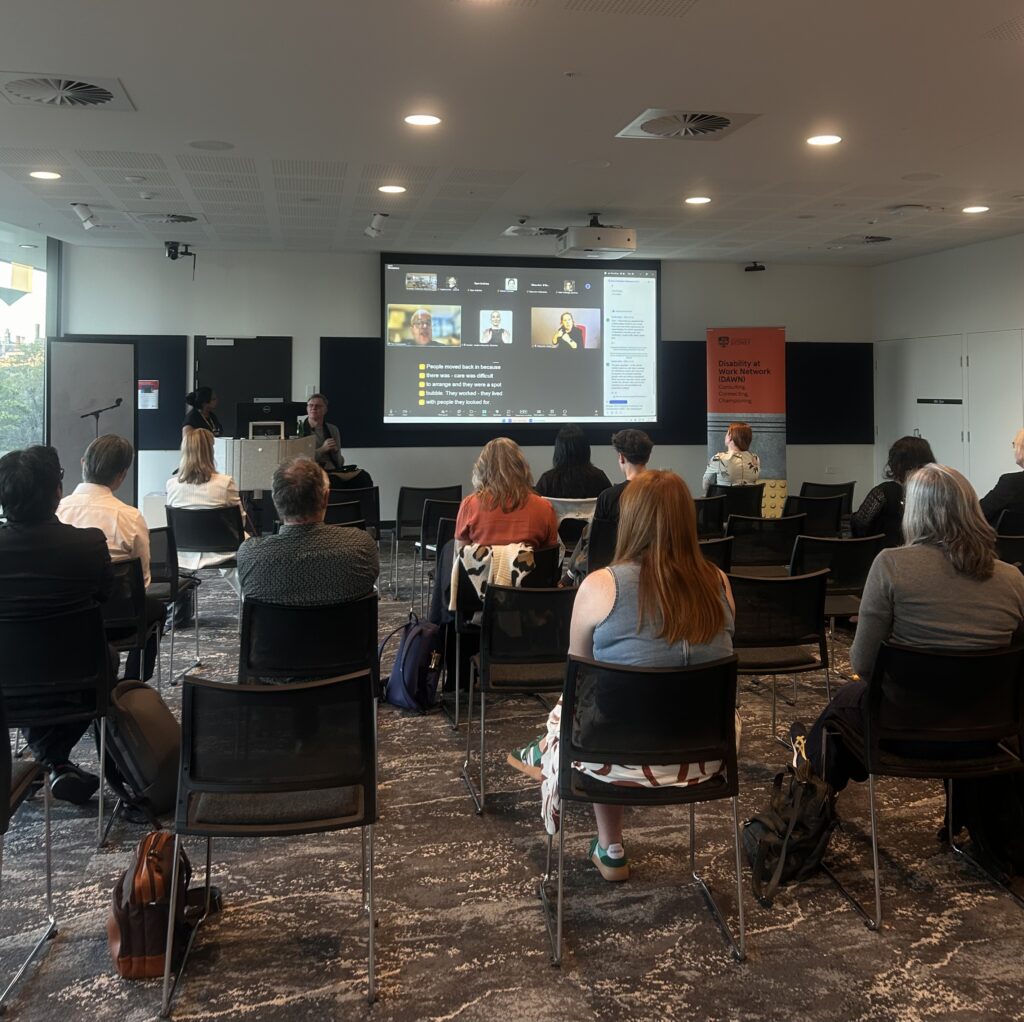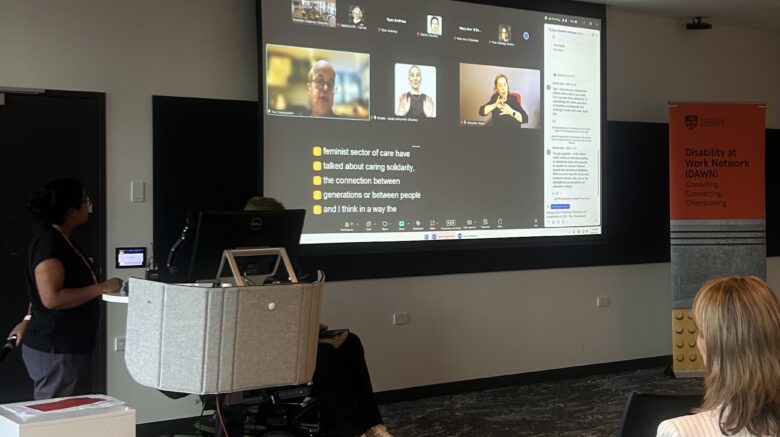The University of Sydney hosted an event on Monday, 8th September. We invited Professor Tom Shakespeare from the UK via Zoom to address the state of affairs in disability thinking and experience engaging us today. Tom is a renowned social scientist and a Professor of Disability Research at the London School of Hygiene & Tropical Medicine. He has published over a dozen books (including Disability Rights and Wrongs and Disability – The Basics), one hundred academic papers on disability, and additionally two novels (The Ha-ha and The Ends).
Central to his presentation on understanding disability in the present day were three elements: disability history, developments and challenges, and how we think about disability now. And last (but not least of all) are the ducks.
Key moments in disability activism and thinking are old now, and Tom’s timeline reinforces this: the social model was born over 50 years ago in 1972 with UPIAS (Union of the Physically Impaired Against Segregation, run by people with disability for people with disability to advocate for social change and an end to institutionalisation and exclusion of people with disability).
Then ten years later, Harlan Hahm posed the idea of people with disability being a minority group like other social groups, and people are disabled by how society treats them, whether they are included or not, just because of their impairment/s.
In 1990 came the Americans with Disability Act, which is a federal civil rights protection that states that it is discriminatory not to include people with disability in everyday life. The same year saw the publication of Michael Oliver’s The Politics of Disability, which sees disability as a social and political construct rather than the impairments themselves.
Next year it will be 20 years since the implementation by the United Nations of the Charter on the Rights of People with Disability (CRPD). Tom poses the question: Are these past advances still the right ones?
Much of the world is different now with rapid developments, especially since COVID in digital technology and accessibility. Tom coming to us by Zoom, for example, as we can work from home. We have a rise in neurodiversity and our understanding of this is still growing. There are mental health crises, especially amongst our young people. And facing all of us everywhere is the climate emergency.
So how we think about disability now is more nuanced. There is an understanding of how much context impacts living with disability. A contextual model of disability means that it’s not just social factors or impairment factors, but all factors that enable and those that disable.
The contextual model of disability then includes all factors that disable or enable a person to live a good life. There are many factors and in fact it is like lining up ducks in a row: health, work, social care, housing, the built environment and so forth. But Tom cautions us because if one factor fails, it can disrupt a person’s entire function. Tom gives the example of getting ducks in a row and that a good life is possible when that happens. However, it can all fall apart if one or more ‘ducks’ fall out of line.


